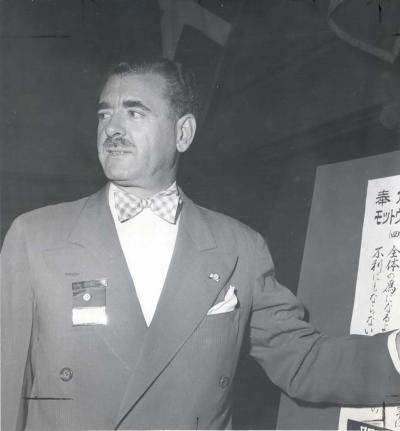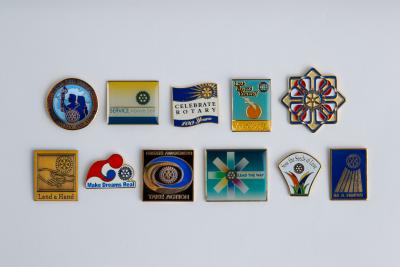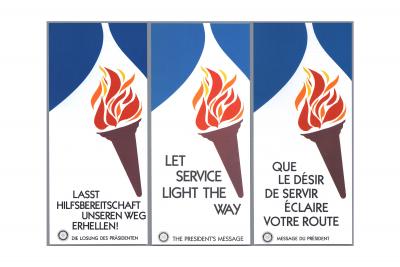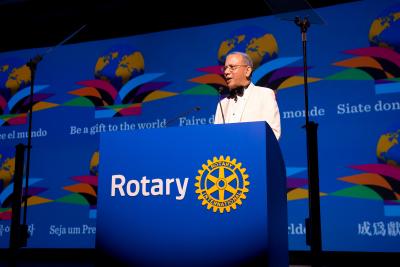Rotary History
Presidential themes and annual messages
For seven decades, Rotary members enthusiastically awaited the incoming Rotary International president’s announcement of their theme. The president announced the theme at the International Assembly, an annual learning event for incoming leaders.

Percy Hodgson, at the 1951 Rotary Convention in Atlantic City, New Jersey, U.S., was the 1949-50 Rotary International president credited with starting the tradition of crafting a theme.
The tradition of crafting a theme is credited to Percy C. Hodgson, Rotary’s president in 1949-50. When Hodgson addressed the International Assembly in 1949, he impressed upon the incoming leaders that they had a “glorious opportunity to impart Rotary knowledge” and that “lack of Rotary knowledge can be a deterrent to the successful operation of a Rotary club.” Hodgson’s 83-word theme, which included a list of four objectives, was substantially longer than the punchier themes of later years, but it captured his hope that incoming leaders have essential knowledge of Rotary.
Other early themes include Rotary Is Hope in Action (Joaquin Serratosa Cibils, 1953-54), Kindle the Spark Within (Nitish C. Laharry, 1962-63), and Good Will Begins With You (Ernst G. Breitholtz, 1971-72) Through their themes, presidents encouraged members to celebrate and support an annual program of service and focused interests.
In the decades that followed, RI presidents introduced theme logos, lapel pins, ties, and scarves. Limited-edition theme ties were introduced in the 1990s and scarves first appeared in 1998-99. Many designs incorporated the theme logo for the year. Others, such as those selected by William Boyd from New Zealand and Sakuji Tanaka from Japan, used colors or imagery that reflects their home country.
A new approach
Although the annual theme and logo had special meaning to many Rotary members, they had little significance to non-members and affected their understanding of Rotary. To avoid confusion with Rotary’s official mottos and vision statement, presidential themes and theme logos were retired at the end of the 2024-25 Rotary Year.
A new tradition of an annual presidential message that is consciously aligned with our vision statement and Action Plan began in 2025-26 with Unite for Good, inspiring members, participants, and the public to join together and be people of action. This shift creates stronger name recognition for Rotary with the public, while retaining cherished aspects from the past for members. The president still announces the annual message at the International Assembly. Presidential ties and scarves (popular attire among district leaders for the year and donors to The Rotary Foundation’s Annual Fund) are still made, but without a one-off logo.
- Access a list of RI Presidents, themes, and annual messages in the Rotary History Resources learning topic in the Learning Center
- Learn how to use the annual presidential message on the Brand Center
- Read more stories about Rotary's history





